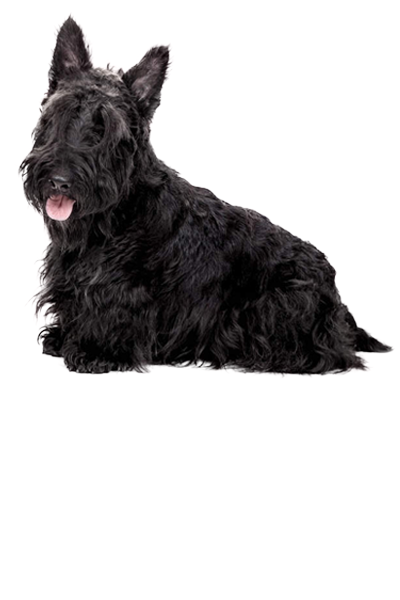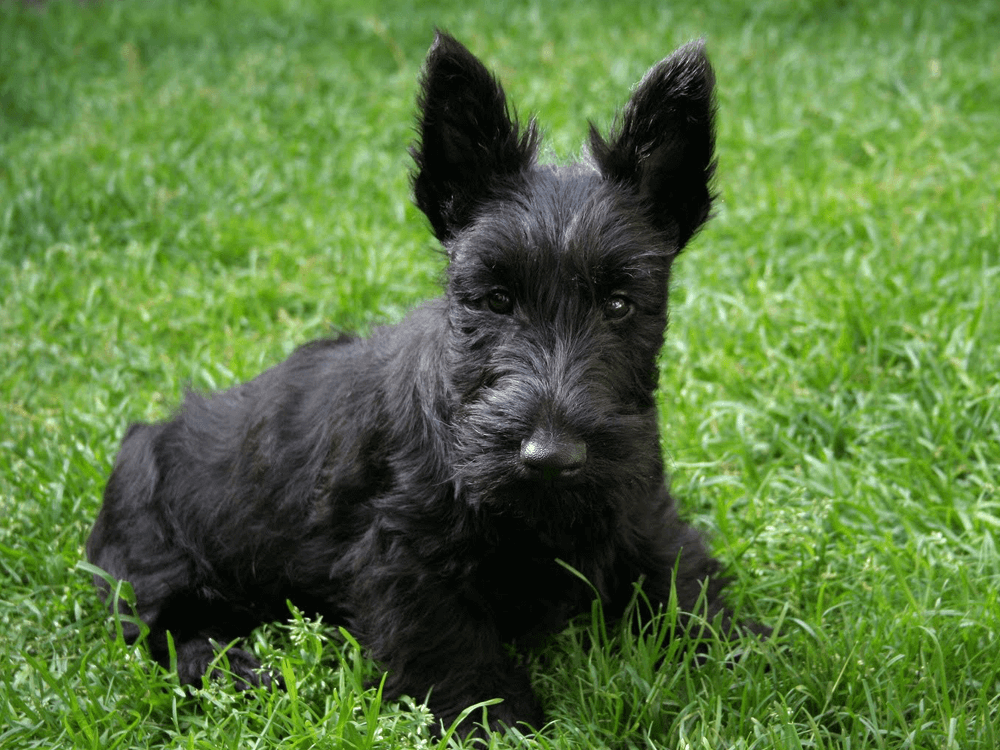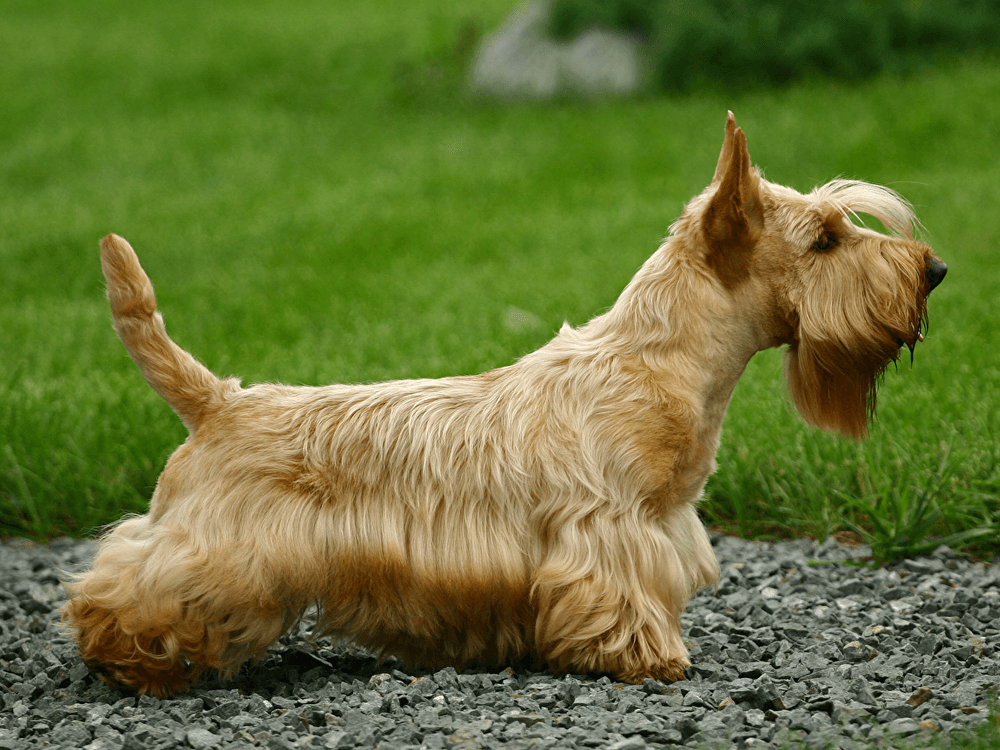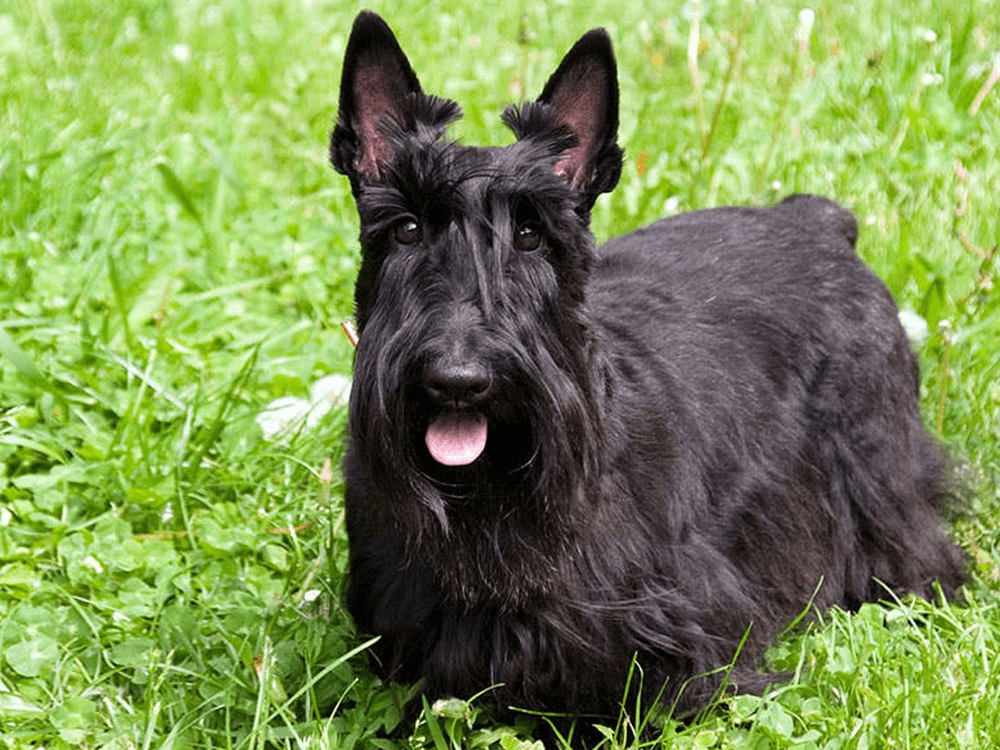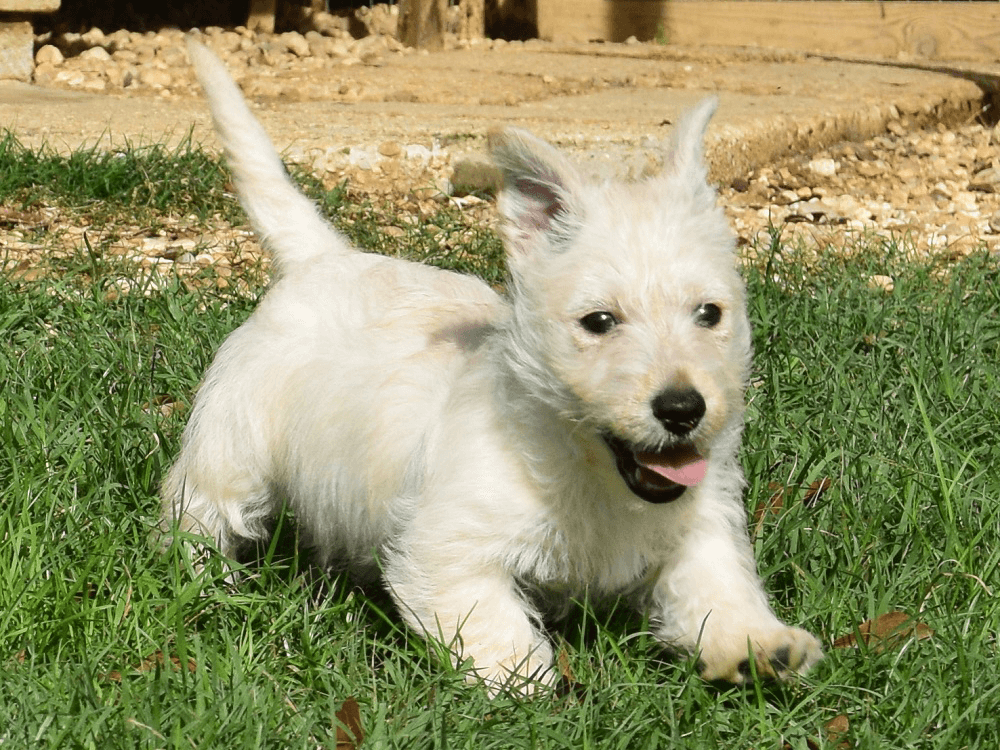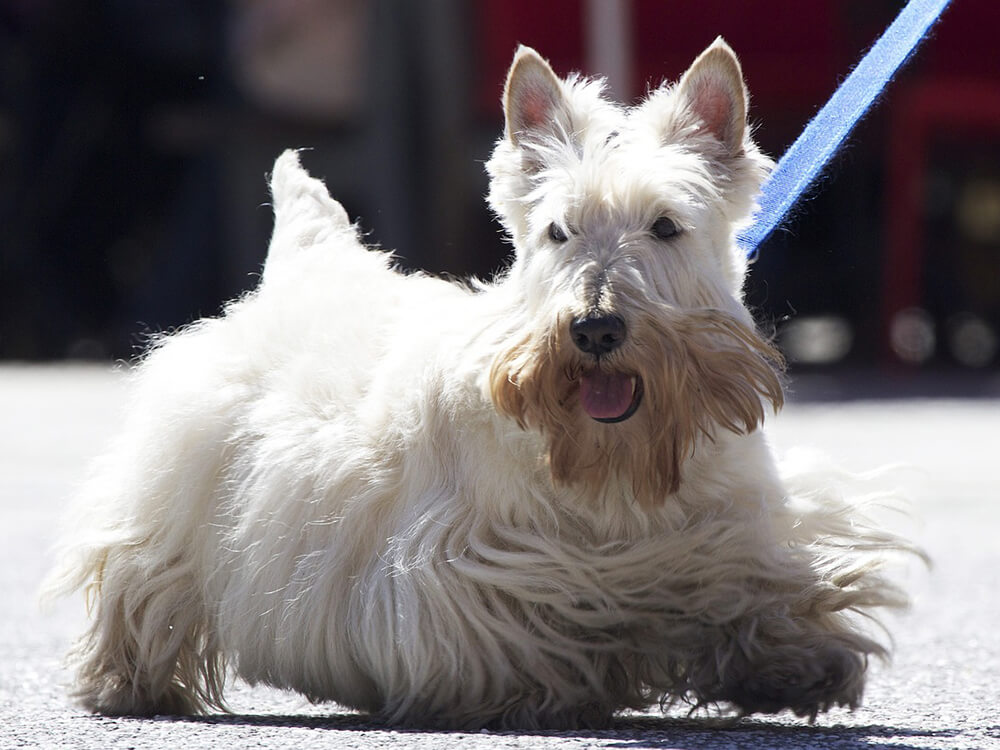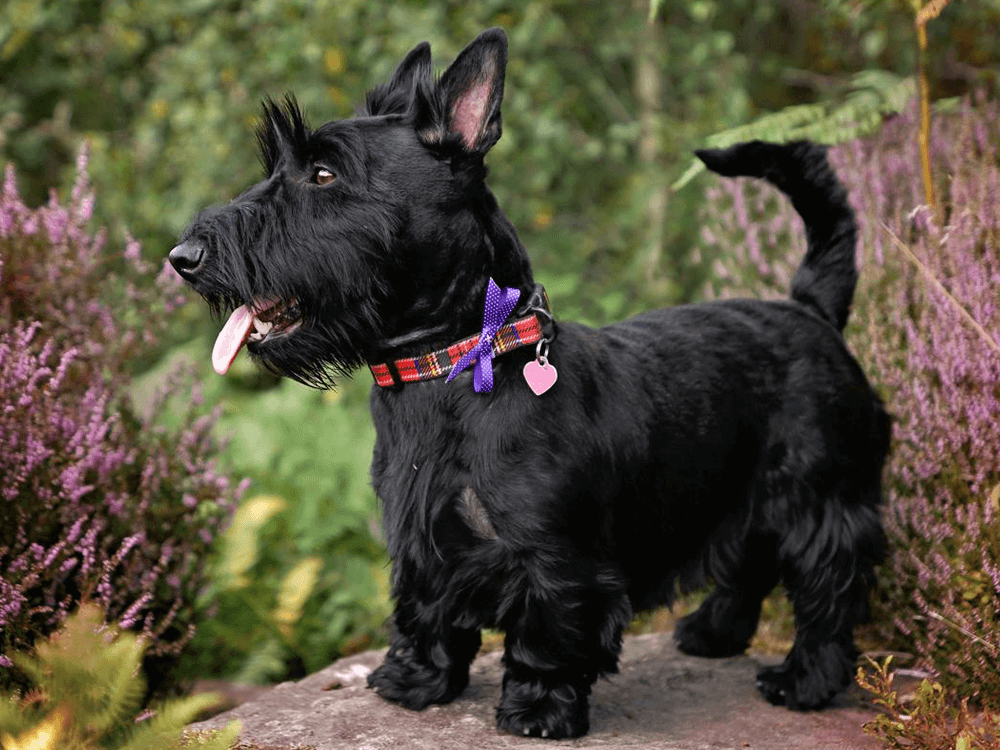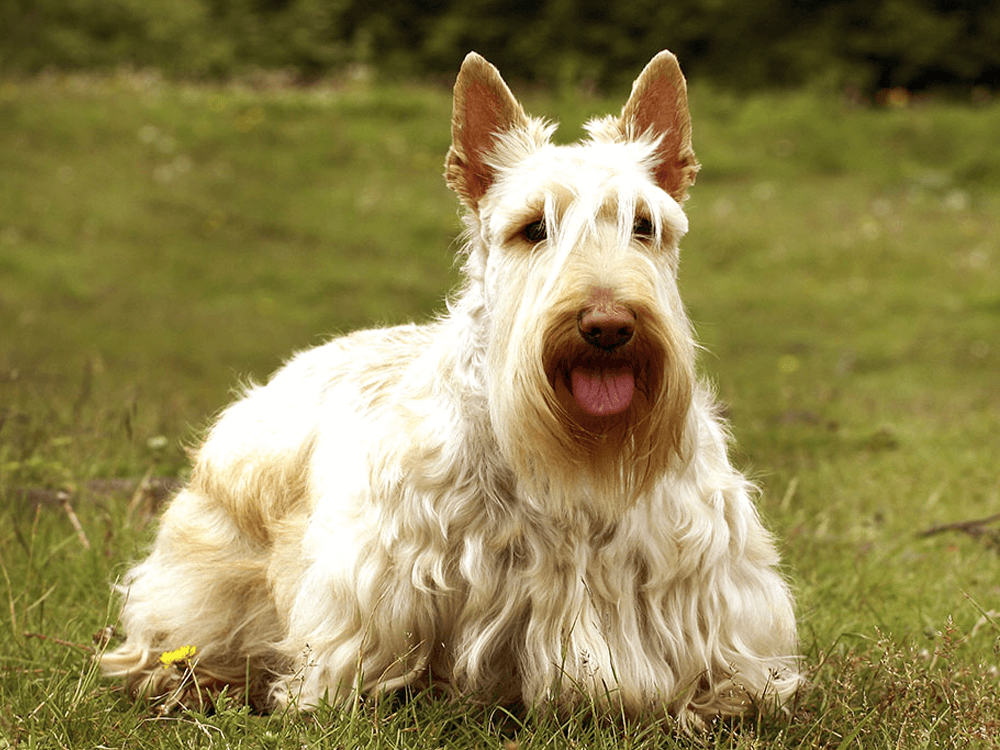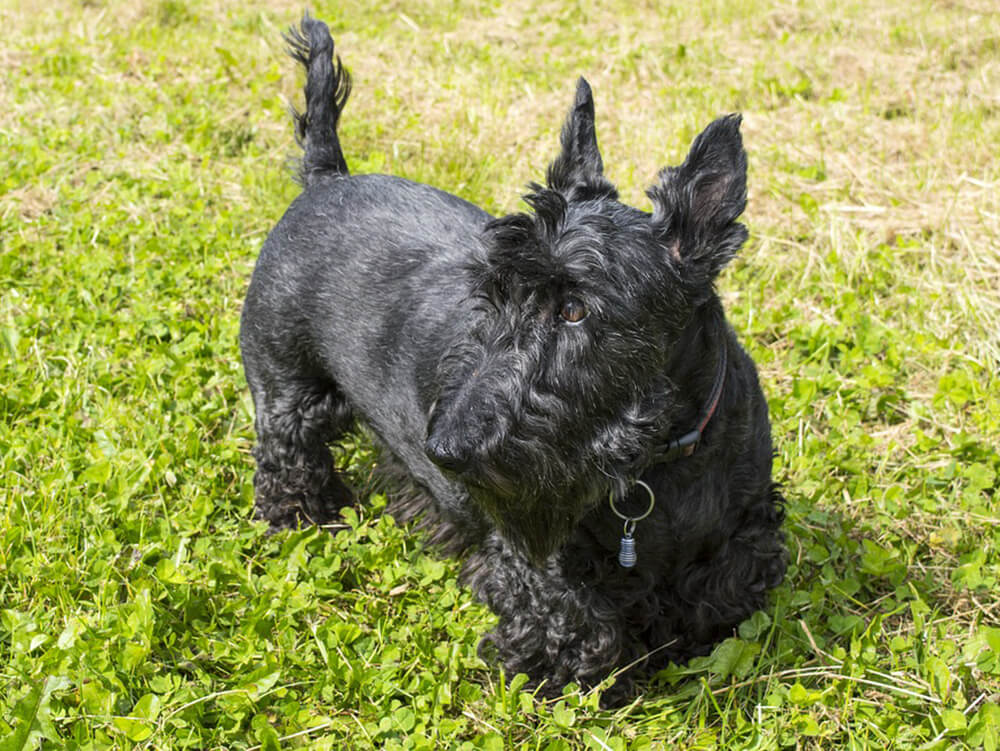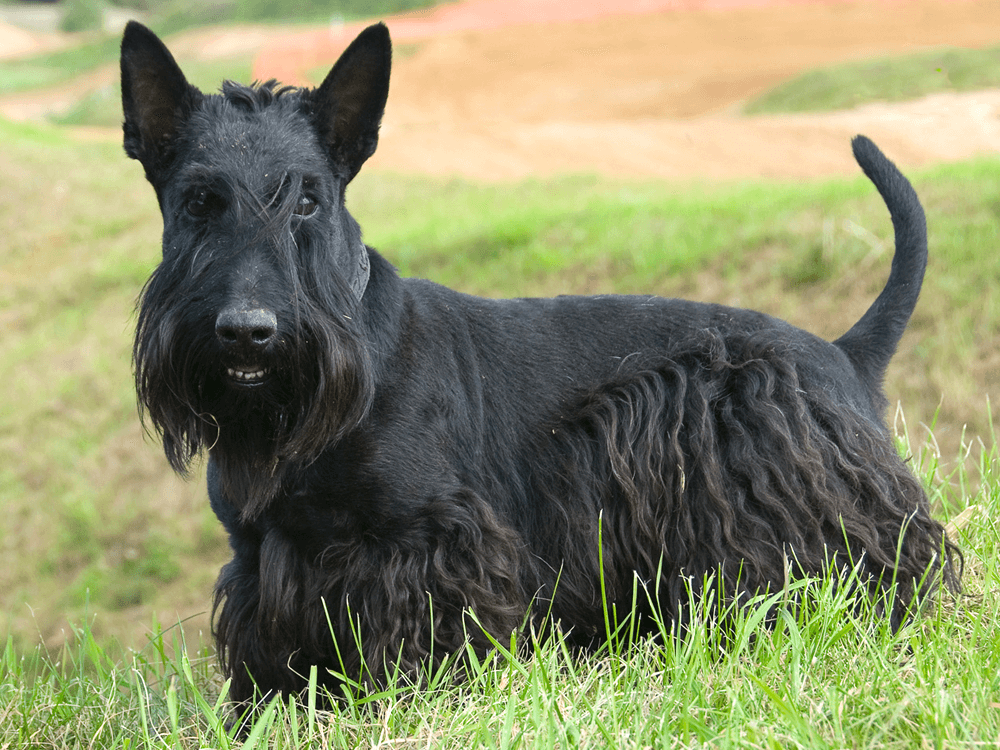
Scottish Terrier Breed Pictures
Vital Breed Stats
| Height: | 25 - 28 cm M | 25 - 28 cm F |
| Weight: | 9 - 11 kg M | 9 - 11 kg F |
| Breed Group: | Working Dog Group |
| Life Expectancy: | 10 - 13 years |
| KC Registered: | No |
Breed Characteristics
| Size: |  |
| Grooming: |  |
| Exercise Level: |  |
| Trainability: |  |
| Barking Level: |  |
| Good with Children: |  |
| Good with other pets: |  |
| Affectionate: |  |
| Protective: |  |
| Cost to Keep: |  |
Give a thumbs up if you love the Scottish Terrier

0
More About the Breed
History
The Scottish Terrier is a British terrier developed in the Scottish highlands. Its history is unclear, but most believe that the breed dates back to the fifteenth to sixteenth centuries.
The Scottie was developed in Britain to hunt and kill vermin that ate grain, eggs, and poultry in the farms. It was bred to be a courageous and scrappy dog, ready to follow and hunt fox or badger by digging its way into the den, if necessary.
In late 1882, there were three different terrier dog breeds exhibited as Scotch terriers, including the Scottish Terrier, Cairn terrier, and West Highland white terrier. The Dandie Dinmont terrier had been initially included, but since it apparently has a different appearance, it was separated into a different breed of dog. The Scottish terrier was only recognised as its own formal breed in the nineteenth century. The Kennel Club UK officially recognised the breed in the 1930s.
Today, the Scottish Terrier remains a favourite both as a companion dog and a family pet thanks to its charismatic looks and its kind, albeit gutsy nature.
Appearance
The Scottish Terrier is a relatively small breed. It grows to about 18–22 pounds in weight and 25–28 centimetres in height for both male and female. It is a compact, sturdy, short-legged dog with a long head, large muzzle, and a bearded face with bushy eyebrows above its dark piercing eyes. The ears are finely textured, either pointed or straight, and are set on top of its head.
The Scottie has a double coat made up of hard, wiry topcoat and a soft and dense undercoat. The coat comes in various colours, including black, wheaten, and brindle.
Grooming
If it is fated to be a house dog, it only needs to be brushed at least once a week. On the other hand, a show dog needs to be brushed daily and hand-stripped twice a year. Also, a Scottie should only be bathed as needed since excessive bathing may irritate its sensitive body.
As part of its dog grooming regimen, always check the ears on a weekly basis for any signs of infection, wax build-up, or irritation. Brush the teeth regularly to prevent tartar and gum disease. Also, nails should be trimmed at least once per month, especially when you start hearing clicking sounds on the floor.
Temperament
Intelligence
The Scottie’s stubborn and independent nature makes it difficult to train. It has a high self-esteem and iron will, thus it is not an ideal choice for permissive dog owners. The new Scottie owner should have a firm and consistent leadership and should immediately enrol the breed to an obedience school. If left unchecked, the Scottie will dominate the household.
A Scottie can tolerate boisterous children, but it is best suited in households with older children who know how to behave around small and scrappy dogs. However, if you already have a Scottie and small children at home, just make sure that playtime is always supervised by an adult to keep things calm. In addition, the Scottish terrier is territorial, which means it may not take it well when other dogs come over to play. However, it gets on well with other dogs and cats it has grown up with in the house. The Scottie will also think nothing of chasing other cats and small animals it encounters with rollicking enthusiasm.
Nutrition
- Senior and less active: up to 590 calories daily
- Typical adults: up to 660 calories daily
- Physically active/working dogs: up to 730 calories daily
Feeding
Health
Exercise
Cost of Ownership
Owning a pet can be a satisfying experience but, as it turns out, it can also be a remarkably pricey one. Studies reveal that most dog owners significantly underestimate the cost of owning a dog over its lifetime. If you are planning to buy a Scottish terrier puppy, make sure you know how much you are likely to pay over time. The following looks at some basic costs for owning a Scottie in the UK:
- The price of buying a well-bred Scottie from a reputable breeder is around £400 to £900.
- Pet insurance for a three-year-old Scottie will cost about £20 to £40 a month.
- Dog food (high-quality, commercial, or home-made) will set you back £20 to £30 a month.
- Veterinary care (includes visits, vaccination, etc.) quickly adds up to £800 a year.
- Dog supplies and equipment will cost £200 for a one-time purchase.
Scottish Terrier Breed Highlights
- The Scottish Terrier is highly prized as a brilliant ratter.
- It is outgoing, lively, and independent, but a bit grumpy.
- It is loyal to its owner, but it is more of a one-person dog.
- It is wary of strangers and is quite an intimidating watchdog.
- Its stubborn and independent nature makes it difficult to train
